

In cutting processing, tool performance has a decisive impact on the efficiency, accuracy and surface quality of cutting processing. There seems to always be a contradiction between the two key indicators of tool performance - hardness and strength (toughness). Materials with high hardness tend to have low strength and toughness, and improving toughness often comes at the expense of a decrease in hardness. Coated tools composed of one or more layers of metal or non-metallic compound films (such as TiC, TiN, Al2O3, etc.) with high hardness and good wear resistance are coated on a soft tool substrate to better solve the problem of tool problems. The contradiction between strength and toughness is a revolution in the development of cutting tools.

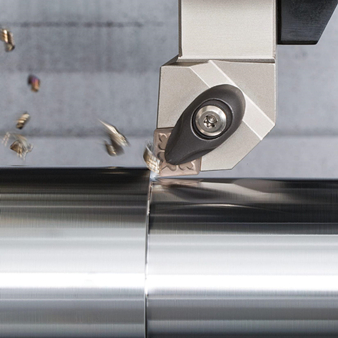
1. Characteristics of tool coatings
(1) Good mechanical and cutting properties. Coated tools combine the excellent properties of the base material and the coating material. They not only maintain the good toughness and high strength of the base material, but also have the high hardness, high wear resistance and low friction coefficient of the coating. Therefore, the cutting speed of coated tools can be increased by 2 to 5 times compared with uncoated tools. Obvious economic benefits can be obtained by using coated tools.
(2) Strong versatility. Coated tools have wide versatility and significantly expand the processing range. One coated tool can replace several non-coated tools, thus greatly reducing the variety and inventory of tools, simplifying tool management, and reducing tool and equipment costs.
2. Classification of coatings
According to different coating methods, coated tools can be divided into chemical vapor deposition (CVD) coated tools, physical vapor deposition (PVD) coated tools, hybrid processes and combination technologies. The principle of CVD coating is shown in Figure 1a, and the principle of PVD coating is shown in Figure 1b. The hybrid process is an effective combination of plasma-assisted CVD technology and traditional PVD technology. For example, a traditional CrN hard coating is deposited first, and then a layer of DLC coating is deposited on top to reduce friction. Combination technology is to nitride the surface layer of tools or parts before coating, which can improve the effectiveness of the coating.
CVD can coat TiCN with excellent wear resistance and Al2O3 thick film with excellent heat resistance. Therefore, CVD coating can show long life in high-speed and high-efficiency cutting processes that generate high temperatures.
PVD is generally used under the same or higher cutting speed conditions as uncoated carbide and high-speed steel, with the goal of extending tool life. It has less restriction on the matrix and less damage, so it is particularly suitable for tools that require wear resistance and chipping resistance. It is also suitable for low-feed machining and finishing or threading tools that require sharp edges.
According to the different substrate materials of coated tools, coated tools can be divided into carbide coated tools, high-speed steel coated tools, and coated tools on ceramics and superhard materials (diamond and cubic boron nitride). Coated carbide cutting tools generally use chemical vapor deposition method, and the deposition temperature is around 1000°C. Coated high-speed steel cutting tools generally use physical vapor deposition method, and the deposition temperature is around 500°C.
The diamond coating is synthesized on the cemented carbide substrate using CVD (chemical vapor deposition). The synthetic coating has a hardness and thermal conductivity comparable to that of natural diamond, and exhibits excellent performance in the processing of non-ferrous materials. Due to its good cutting performance, diamond-coated tools have broad application prospects in the field of cutting processing. They are ideal tools for processing graphite, metal matrix composites, high-silicon aluminum alloys and many other wear-resistant materials. Currently, they are mainly used in is the automotive and aerospace industry.
According to the nature of the coating material, coated tools can be divided into two categories, namely "hard" coated tools and "soft" coated tools. The main goals pursued by "hard" coated tools are high hardness and wear resistance. Its main advantages are high hardness and good wear resistance. Typical ones are TiC and TiN coatings. Various coated tools are shown in Figure 4 . "Soft" coated tools are tools prepared with solid lubricants such as MoS2, WS2, etc. The goal of "soft" coating is low friction coefficient, also known as self-lubricating tool. Its friction coefficient with the workpiece material is very low. It is only about 0.1, which can reduce stickiness, friction, cutting force and cutting temperature.
Coating cutting tools is one of the important ways to improve the performance of cutting tools. The emergence of coated cutting tools has greatly improved the cutting performance of cutting tools, and the application fields are constantly expanding. Coated cutting tools have great potential in the field of CNC machining and will It is the most important tool variety in the field of CNC machining in the future. At present, the coating proportion of foreign carbide indexable inserts is more than 70%, and the coating proportion of European gear cutters is as high as 90%. Coating technology has been applied to end mills, reamers, composite hole machining tools, gear hobs, shaving cutters, forming broaches and various machine-clamped indexable inserts to meet the needs of high-speed cutting of various steels and cast irons, and resistant materials. Thermal alloys and non-ferrous metals and other materials are needed.
How many types of coating, do you know?
TIN Coating
TiN is a general-purpose PVD coating that has a high cost performance and is a fairly stable compound that can increase tool/tool hardness and have a high oxidation temperature. This coating can achieve very good processing results when used on high-speed steel cutting tools or forming tools.
The titanium nitride coating and its sintered body have a satisfactory golden color and can be used as gold-substitute decorative materials. They have good imitation gold effect and decorative value, and are anti-corrosion and extend the life of handicrafts.
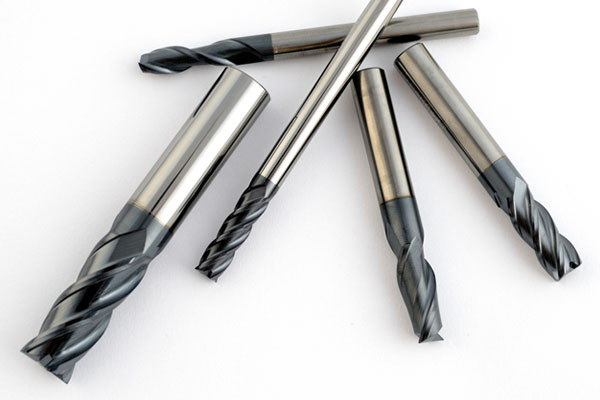
Coating type | Coating color | Coating thickness | Nanometer hardness | Friction coefficient | Maximum application temperature |
TiN | Golden yellow | 1-5μm | 2300HV | 0.6 (for steel) | 600℃ |
Main feature
| Standard coating, good versatility, high oxidation temperature, It is widely used in cutting processing, stamping, injection molds and parts with medium to low speed and low cutting resistance. | ||||
Application | 1. Precision molds: mirror molds, injection molds, stamping molds, stretch forming molds, shear punches and various mold parts, such as sliders, ejector pins, etc. 2. Cutting tools: drill bits, milling cutters, taps, hobbing cutters, gear planers, shaving cutters, broaches, circular saw blades, disposable blades and other cutting tools 3. Measuring tools: vernier calipers, calipers, gauges, plug gauges, Micrometer, etc. 4. Automotive industry: piston rings, plungers, etc. | ||||
TiCN Coating
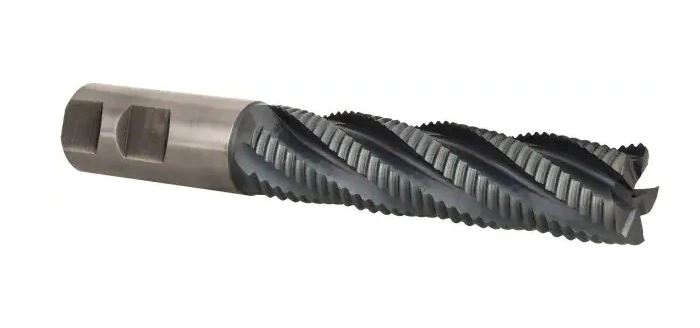
Features of TiCN coating: silver-gray in color, with low internal stress, relatively high toughness, good lubricity, high hardness (HV3200), wear resistance and other characteristics. Suitable for applications that require lower friction coefficient and higher hardness, such as chip tools, forming dies, stamping dies, etc.
Coating type | Coating color | Coating thickness | Nanometer hardness | Friction coefficient | Maximum application temperature |
TICN
| Silver gray | 1-4μm | 3200HV | 0.2 (for steel)
| 400℃ |
Main feature
| The main features are low internal stress, relatively high toughness, good lubricity and wear resistance. It has a significant effect on punching dies and stretch forming dies. | ||||
Application | 1. Precision molds: metal stamping and bending molds. Continuous high-speed punching dies and stretch forming dies have significant effects. 2. Cutting tools: drill bits, taps, milling cutters, hobbing cutters, circular saw blades and other cutting tools. | ||||
TiAlN Coating
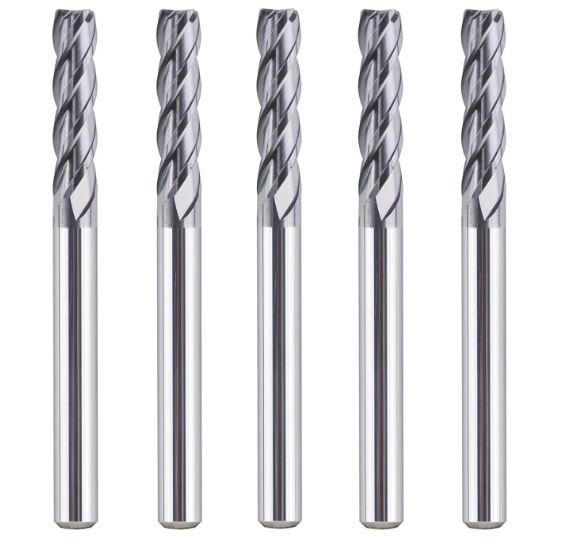
Compared with titanium nitride, the TiAlN coating has significantly improved properties such as nano-hardness, bonding strength, wear resistance and high-temperature oxidation resistance due to the addition of aluminum. At high temperatures, Al ions diffuse to the surface and easily form a dense protective film of aluminum oxide (Al2O3), which increases the anti-oxidation temperature of the film from 600°C for titanium nitride (TiN) to titanium aluminum nitride (TiAlN). The temperature is about 900℃, and the coating hardness increases to nearly HV4000. The aluminum oxide layer formed by the TiAlN coating can effectively improve the high-temperature processing life of the tool. Carbide cutting tools mainly used for dry or semi-dry cutting can choose this coating.
Coating type | Coating color | Coating thickness | Nanometer hardness | Friction coefficient | Maximum application temperature |
TIAIN0 | purple black | 1-4μm | 3500HV | .5 (for steel) | 900℃ |
Main feature
| Excellent wear resistance and oxidation resistance, suitable for cutting difficult-to-machine materials such as steel, cast iron, cast steel, and quenched steel, as well as roughing with large feed rates. | ||||
Application | 1. Precision molds: stamping molds, powder metallurgy molds, die-casting molds 2. Cutting tools: drill bits, milling cutters, taps, reamers, hobbing cutters, gear planers, shaving cutters, broaches, circular saw blades, disposable blades, die-cutting knives and other cutting tools are suitable for processing alloy structural steel, Martensitic stainless steel, hardened mold steel | ||||
AlTiN Coating
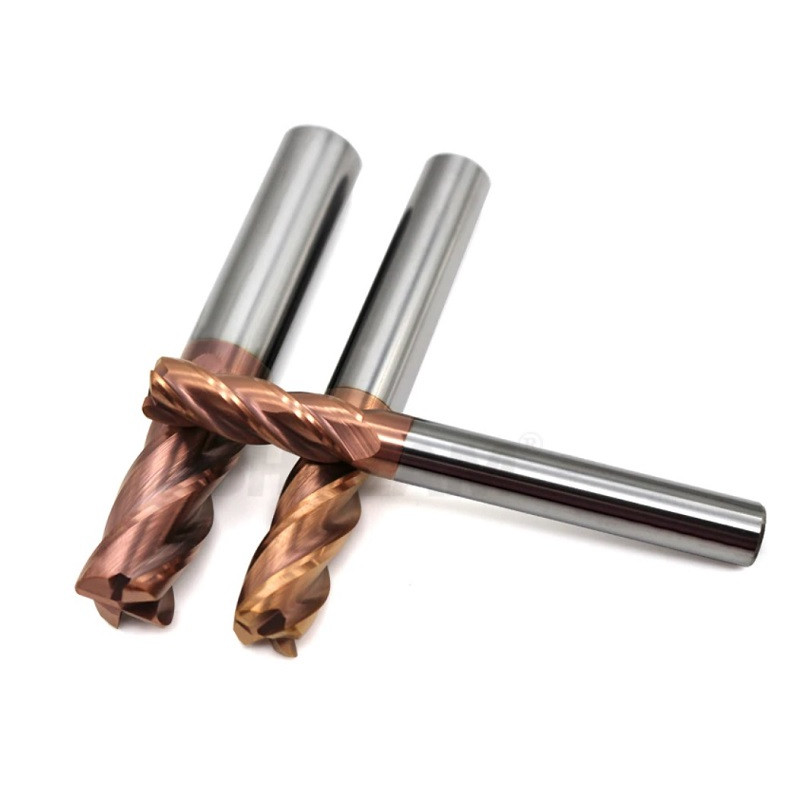
Titanium aluminum nitride coating is a coating developed on the basis of titanium aluminum nitride. The content of aluminum (TiAlN) in the coating has been further increased, so the oxidation resistance of the coating has been further improved. The maximum heat-resistant temperature can reach 1000°C, and the hardness of the coating has also been improved, up to 4200HV. Especially suitable for high-speed dry cutting and high-hardness cutting. It is used in some molds that require high temperature resistance, such as forging molds and pouring molds.
Coating type | Coating color | Coating thickness | Nanometer hardness | Friction coefficient | Maximum application temperature |
AITIN
| black
| 1-4μm | 4000HV | 0.4 (for steel) | 1000℃ |
Main feature | High hardness, extremely wear-resistant, excellent high temperature resistance and oxidation resistance, suitable for processing various alloy steels, plain carbon steels, cast irons, hardened mold steels, stainless steel, etc. | ||||
Application | 1. Precision molds: stamping molds, powder metallurgy molds, and die-casting molds are suitable for materials including nickel alloys and rare metals. 2. Cutting tools: drill bits, milling cutters, reamers, hobbing cutters, broaches, circular saw blades, disposable blades, die-cutting knives and other cutting tools | ||||
DLC
DLC coating, also called diamond-like coating, has high hardness (>HV1500) and low dry friction coefficient (0.05-0.1). It is a coating that can achieve oil-free self-lubrication. The coating has an extremely low coating processing temperature, which can reach as low as 130 degrees. It is suitable for all metal materials and most non-ferrous metal substrates. The DLC coating does not change the effective size and surface roughness of the parts.
The unique lubrication properties of DLC coatings are widely used in engine parts, non-ferrous metal cutting tools, non-ferrous metal and stainless steel forming stamping dies, sliding seal parts, semiconductor industry molds, injection molds, textile industry, etc.
DLC is a general term. The specific performance needs to be adjusted according to the actual situation, such as workpiece material, processing conditions, usage (friction, speed, pressure, etc. parameters) to adjust the ratio of SP3 and SP2 to achieve the thickness. Wear resistance, hardness and other indicators change to adapt to the specific use occasions of the workpiece.
| Coating type | Coating color | Coating thickness | Nanometer hardness | Friction coefficient | Maximum application temperature |
DLC | Silver gray | 1-4μm | 2300HV | 0.1 (for steel) | 450℃ |
Main feature | High lubricity (low friction coefficient), good anti-adhesion, high hardness and good wear performance | ||||
Application | Precision parts·Dry cutting (non-ferrous metals: aluminum, copper)·Injection molding (improved mold release)·Aluminum cutting and forming disc molds | ||||
CrN Coating
The good anti-adhesion and anti-corrosion properties of CrN coating make it play an important role in the mold and chip tool industry.
CrN coating is suitable for situations where the friction coefficient is low but does not require high hardness, such as stamping dies, especially molds for stamping non-ferrous metals, such as copper, aluminum, etc. CrN coating is better than other coatings in friction and wear situations. Tougher and more durable. It is more corrosion resistant to aqueous solutions than CRN coating. The higher surface hardness, lower friction coefficient and lower residual stress of CrN coating make it suitable for anti-wear and metal-to-metal friction situations. Moreover, the chromium nitride coating has high toughness, high corrosiveness and chemical resistance to aqueous solutions, and has certain lubricity. Especially in the injection molding industry, chromium nitride (CrN) coating is an ideal choice to solve the problem of mold corrosion.
Chip tools: The good anti-adhesion properties of CrN coating make it the coating of choice in machining that is prone to built-up edge. Suitable for processing non-ferrous metals such as copper and aluminum.
Coating type | Coating color | Coating thickness | Nanometer hardness | Friction coefficient | Maximum application temperature |
CrN
| silver gray | 1-6μm | 2000HV | 0.3 (for steel)
| 700℃ |
Main feature
| Low stress, high adhesion, high toughness, high corrosion resistance | ||||
Application | Cutting (processing copper and other non-ferrous metals) Metal forming -Injection molding Component- Aluminum/magnesium alloy mold forming | ||||
AlTiCrN Coating
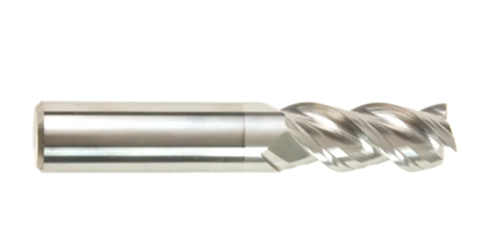
AlTiCrN coating is widely used, suitable for dry and wet chips, and has good toughness, wear resistance and wear resistance. The combination of these properties makes it ideal for light to moderate molding applications,
Including carbon steel, austenitic stainless steel, galvanized sheet, sprayed or coated steel, copper alloy and other materials.
In addition, AlTiCrN coating has excellent thermal stability and corrosion resistance. For aluminum die-casting molds, AlTiCrN coating can effectively reduce common corrosion and sticking conditions.
Coating type | Coating color | Coating thickness | Nanometer hardness | Friction coefficient | Maximum application temperature |
AlTiCrN | Grey | 1-4μm | 3200HV | 0.4 (for steel) | 850° C |
Main feature | Good toughness, wear resistance and abrasion resistance Wide range of applications, suitable for dry and wet chipping | ||||
Application | 1. Precision molds: stamping molds, powder metallurgy molds, and die-casting molds are suitable for materials including nickel alloys, rare metals, etc. 2. Cutting tools: drill bits, milling cutters, reamers, hobbing cutters, broaches, circular saw blades, disposable blades, die-cutting knives and other cutting tools. | ||||
ZrN Coating
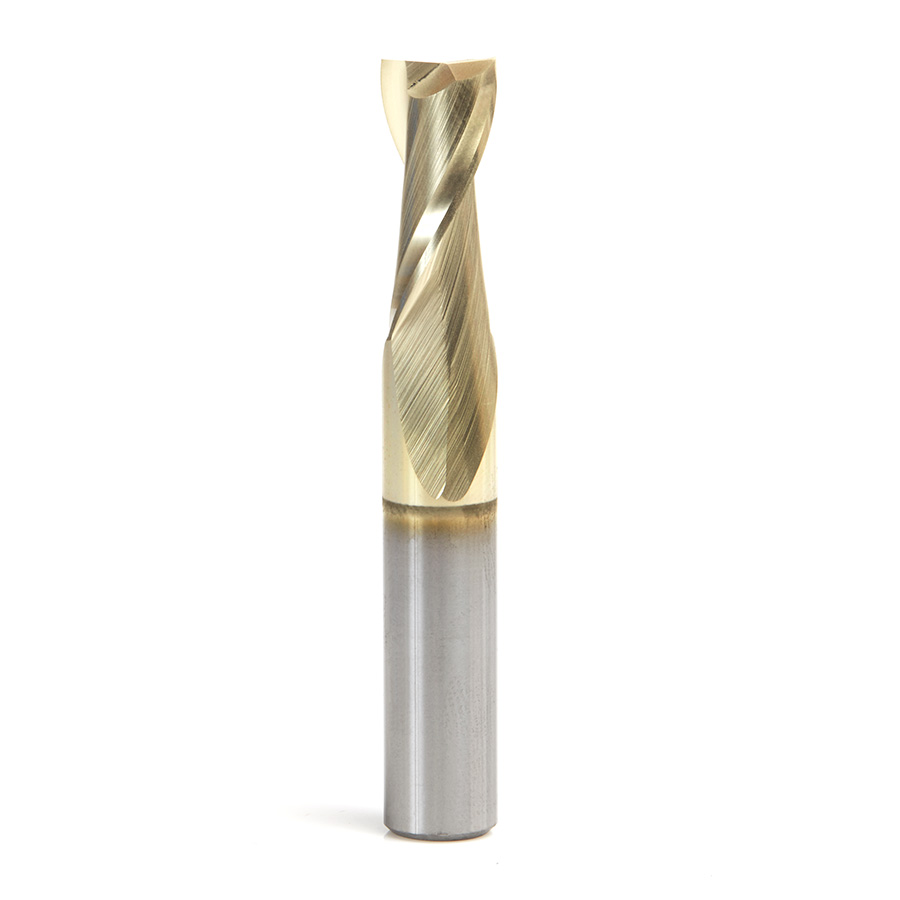
ZrN (zirconium nitride) coating is a special anti-stick coating that does not contain Ti and Cr. It is suitable for processing aluminum, copper, titanium and their alloys without causing build-up and sticking.
Coating type | Coating color | Coating thickness | Nanometer hardness | Friction coefficient | Maximum application temperature |
ZrN | Light gold | 1-5μm | 2400HV | 0.35(for steel) | 600℃ |
Main feature | Anti-stick special coating | ||||
Application | 1. Suitable for processing aluminum (6 series, 7 series), copper and other non-ferrous metal applications. 2·Injection molding (improved demoulding) | ||||
---EDITOR: Doris Hu
---POST: Doris Hu
Semiconductor Industry Solutions
PCD & PCBN Tools Grinding Industry
Diamond Cutting Bruting Polishing
Add: No.171 Zhongyuan Rd, Zhongyuan District, Zhengzhou, 450001, Henan, China
Tel: +86-371-86545906
Phone / Whats App: +86 18339903057
E-mail: [email protected]



